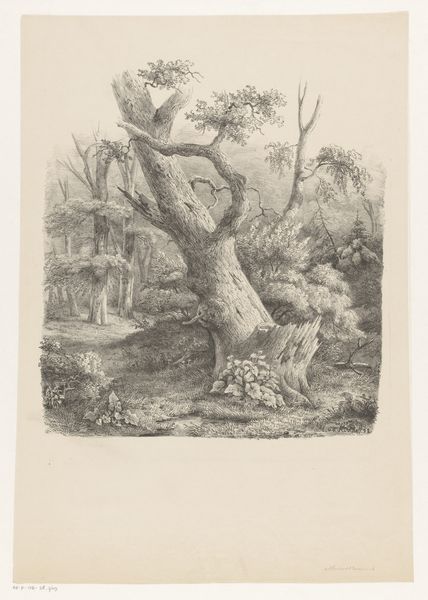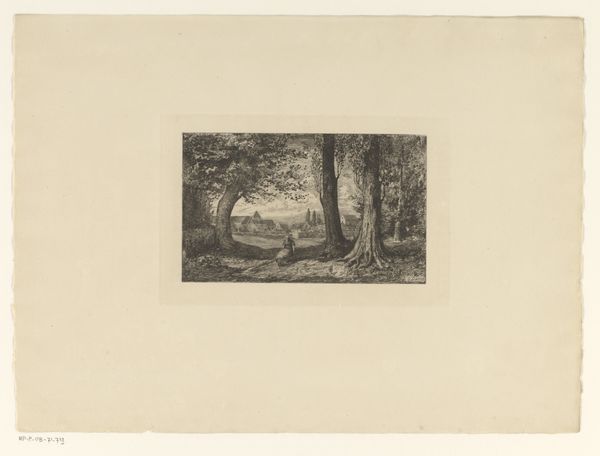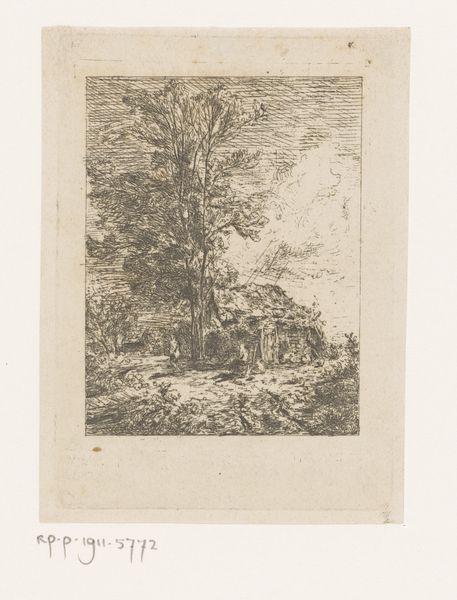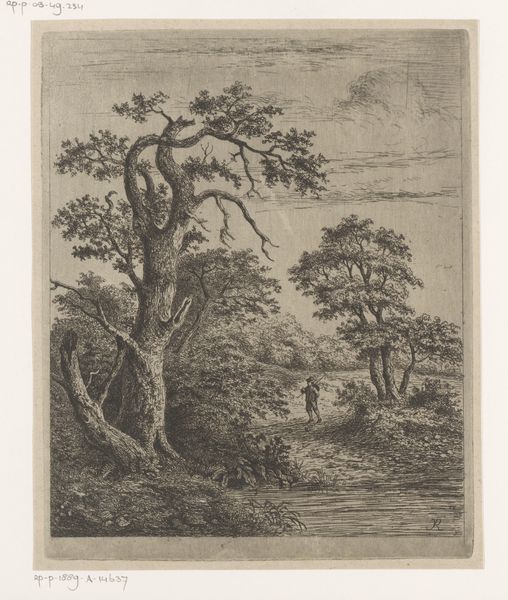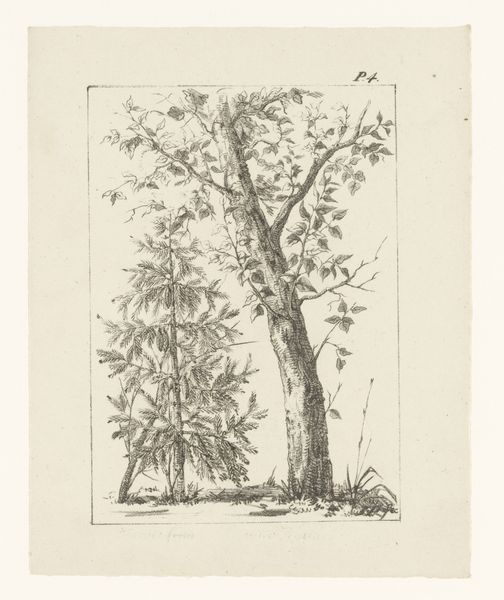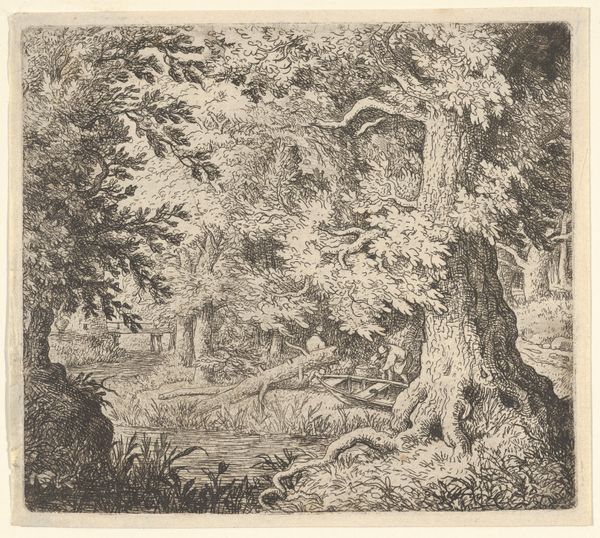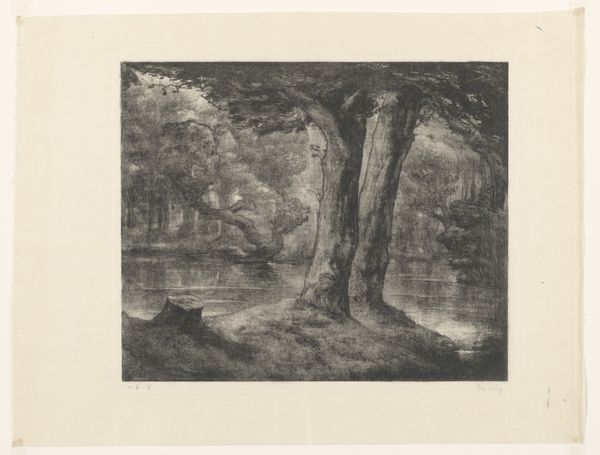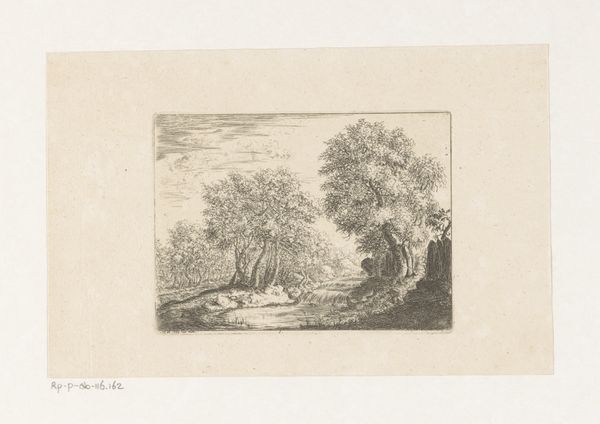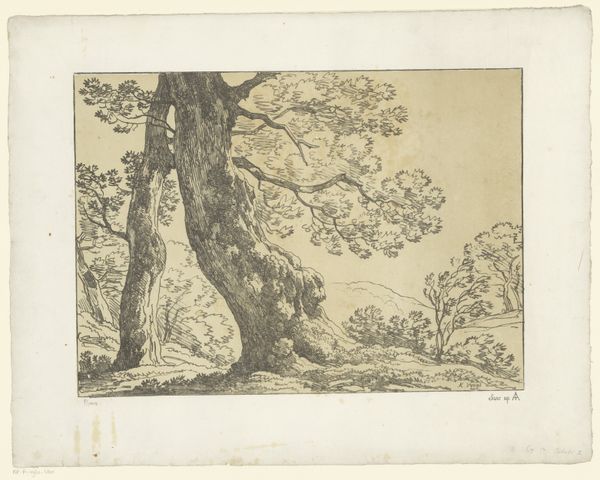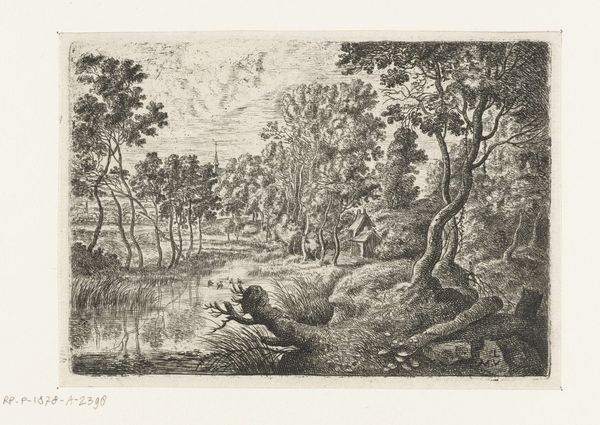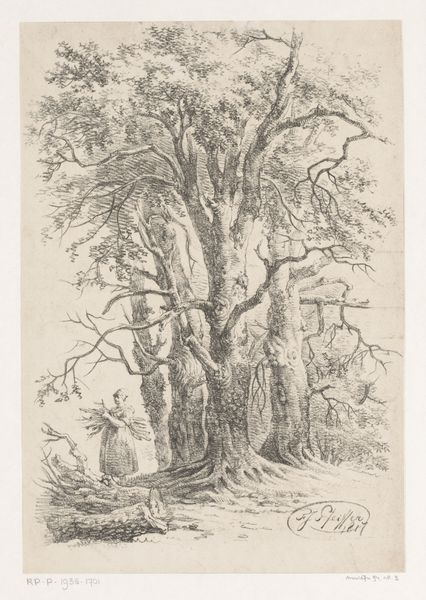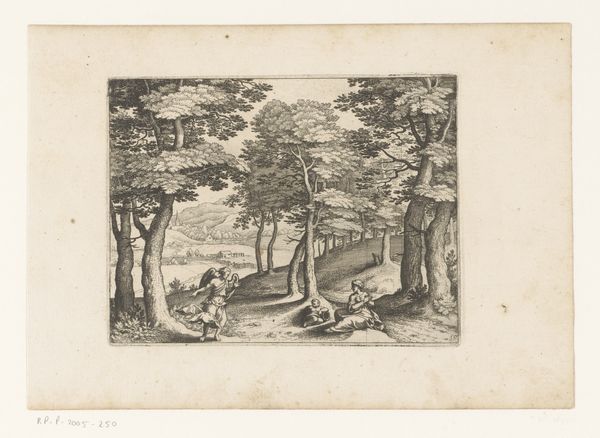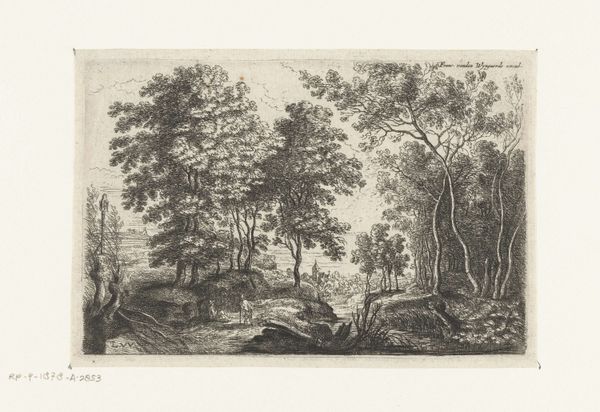
print, engraving
# print
#
landscape
#
genre-painting
#
engraving
Dimensions: height 183 mm, width 132 mm
Copyright: Rijks Museum: Open Domain
Editor: This is Elias Baeck's "Bosgezicht met jager" from sometime between 1689 and 1747, created using print and engraving techniques. It feels like a peaceful forest scene, but there’s this hunter figure that gives it a sense of purpose, almost like a working-class narrative hidden within nature. What strikes you most about this print? Curator: As a materialist, I am intrigued by how Baeck utilizes engraving to portray the forest. Notice the varying line weights? It imitates the texture of bark, foliage and undergrowth. But it’s more than just depiction. The laborious process of engraving itself—the physical act of cutting into the plate— mirrors the hunter’s labour. Editor: So you are focusing less on the visual and more on the physical act of its creation. Interesting. Curator: Precisely! Think about the societal implications. Prints made art more accessible, a form of early mass production if you will, democratizing imagery that was once only available to the elite who could commission paintings. How do you see this print engaging with ideas of labour or consumption? Editor: I never thought of prints that way, but it is accessible! Maybe this hints at a changing social dynamic. The print’s ability to reproduce creates almost a mass production accessible to commoners, not just royalty. Curator: Indeed! And look at how the composition invites the viewer in, it positions us as consumer to reflect on. The artist made something not necessarily because of needing the money but for expressing his artistic views, and making them available. Editor: That is fascinating. Now that I think about the technique used to create the print I view the work more deeply!
Comments
No comments
Be the first to comment and join the conversation on the ultimate creative platform.
